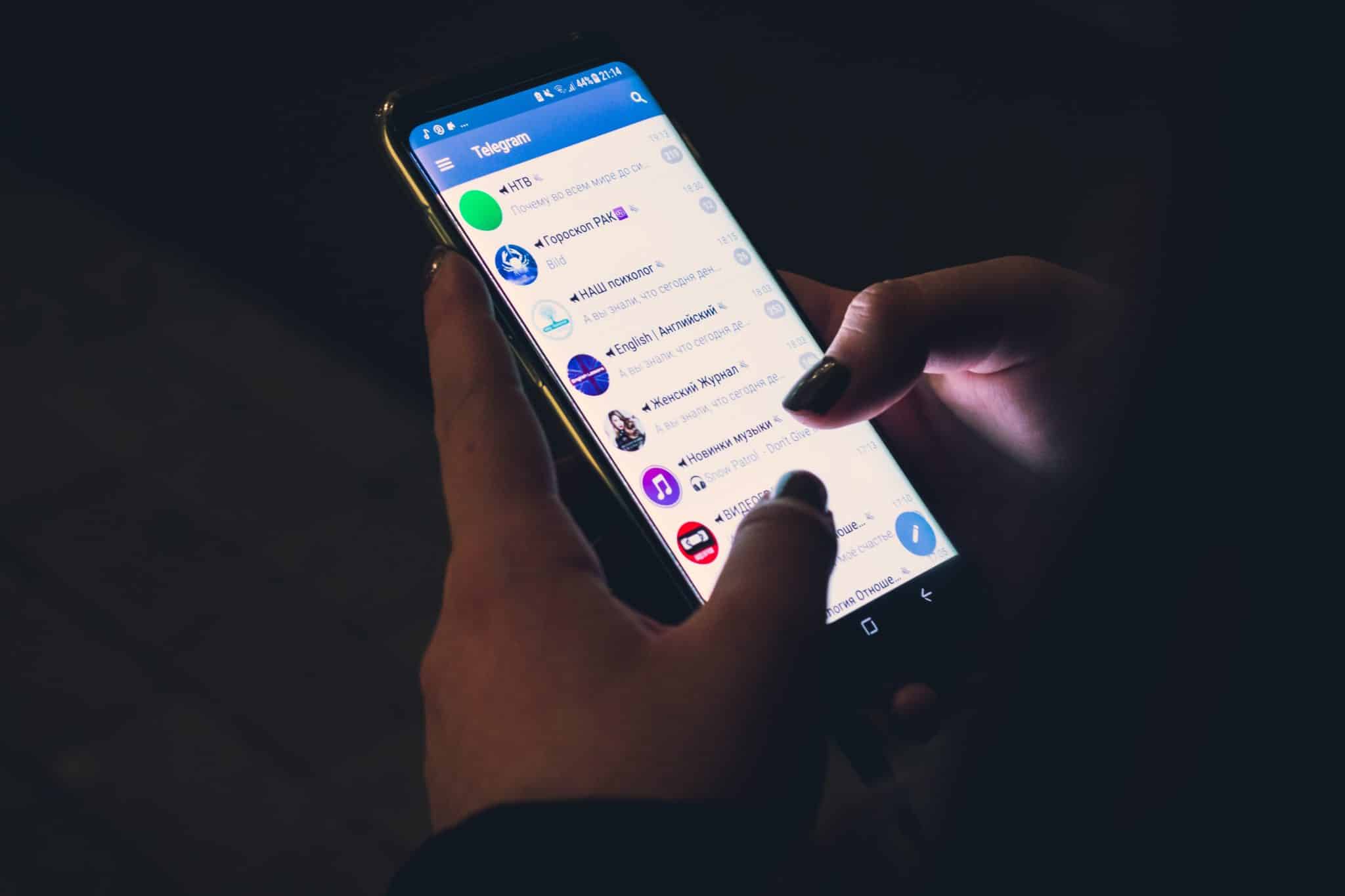2020 is finally peeking over the horizon and it’s the perfect moment to take a look at 10 of the key marketing trends that are set to be big in the coming year (and beyond). With technology continuing to evolve at a rapid pace and disrupt the industry one innovation at a time, everything else has to keep up, and that includes marketers. These advancements mean that there are a plethora of new ways to reach the consumer, but it also means expectations are rising year on year, and, to stay relevant, it’s crucial that marketers keep tabs on them.
What can we expect as we welcome in the new year? Here are 10 of the top marketing trends for 2020 to look out for.
10 Essential Marketing Trends 2020
Personalization Over Saturation
It was recently estimated that we are exposed to between 6,000 - 10,000 advertisements each day, and that number is only set to increase. In a world that’s saturated by signals, it’s no wonder that many consumers are baying for personalization from brands in order to catch their attention. Forbes highlighted that out of 1,000 people surveyed, 90% want more personalization and that 80% were most likely to invest in a brand that gave them personalized experiences.
But these personalized experiences don’t necessarily have to be elaborate and can be done via email. By tailoring the content using the data received about preferences, purchase history, and browsing behavior, marketers are able to segment effectively and deliver content that is customized to the receiver. To maximize your email marketing strategy, you need the right tools that allow you to easily store, track and analyze personal information, as well as gather statistics that help you measure your marketing efforts and how to hone them. Make a start on your strategy with our ebook about the dos and don’ts of emailing and contact management.

Shifting Buying Behaviors Mean More Chatbots
One of the marketing trends in 2020 to look out for is the chatbot. The chatbot has evolved dramatically in the last few years and, as AI-tech grows in sophistication, it has been predicted that chatbots will help retailers cut costs by $439 billion annually and that sales earned through them will reach $112 billion by 2023. With buying behavior becoming ever more digital and consumers looking for quick, simple ways to get the information needed to assist their buying decisions. Then it should come as no surprise that large companies are set to increase their use of chatbots and intelligent AI-solutions to facilitate said consumer-brand interactions and potentially convert the user into a lead.
Storytelling is Here to Stay
Storytelling and sharing has become a mainstay of marketing and, today, consumers want to connect with brands on a much deeper level and whose narrative is delivered with a human touch. This desire for authenticity has been perpetuated by social platforms that connect peers to one another, via which the unpolished experiences being shared provoke an emotional reaction. By weaving the brand message together with emotions, businesses are giving consumers reasons to buy their product and telling them why their brand matters. It has become a must for companies to adopt a wide range of storytelling strategies to reach and retain the consumer’s attention.
These strategies are as diverse as the number of stories there are to tell (branded content, influencers integration, UGC, etc), so while it is important for companies across industries to invest in storytelling, it is even more crucial to evaluate the performance correctly. The nature of storytelling means that we need to analyze performance in terms of not only quantitative but also qualitative, this is something, for example, we take into consideration at Launchmetrics through our proprietary Media Impact Value™ algorithm (MIV®). Our algorithm measures the impact of placements and mentions across different Voices in the Fashion, Luxury, and Beauty industries to determine how brand value is being created by which brand activities and where.
Increase in Influencer Partnerships
As mentioned above, consumers are eager to connect with brands that deliver authentic experiences through their marketing activities. That is where key opinion leaders (influencers) step into strategies, helping brands extend the reach of their message to their target audience through a trusted and recognizable voice. In our report The State of Influencer Marketing 2019, we found that 80% of fashion, luxury and beauty brands had planned to implement collaborations with influencers by the end of the year, and, looking towards 2020, that number is set to rise.
So what kind of influencer collaborations should your brand be investing in? This, of course, depends on your marketing goals, but we found out that, of the four types of influencer that exist, 45.5% of professionals from the FLB industries feel that Micro-Influencers are the most appropriate tier of influence for their brand. Why? Not only because most budgets are geared towards Micro and Mid-tier influencers, but because the audiences that Micro-Influencers command are more inclined to trust the opinions that they share and deem them as authentic. So looking at the marketing trends 2020, it’s crucial that companies select the best tier of influencer in relation to the campaign goals set as well as the values they share, to optimize the impact of the activity and also the return on investment.
Connecting the Dots to Younger Audiences
In recent years, the Fashion, Luxury, and Beauty industries have been disrupted by digitally-native brands, attracting younger audiences with their direct-to-consumer business models. Understanding Generation Z and how to reach them had been puzzling established brands up until recently, and now they are taking the lead from these online-born brands and allocating their marketing budgets into activities that are directed at younger consumer groups.
Whether it’s exploring new platforms like Tik Tok, leveraging UGC or understanding the impact that influencer marketing can have on brand value, the challenge that 2020 presents is understanding how to adapt brand communication to bring Gen Z onboard whilst maintaining brand equity amongst loyal consumers.
New research by Bain & Company and Farfetch estimates that millennials will represent 40% of the global personal luxury goods market by 2025. This is why digital marketing budgets are set to grow in 2020, and so knowing the Voices that contribute to your brand value and to which consumer group they resonate with is key to driving value on your investments.
Customer Experience Over Product
As a consumer yourself, you’ll know that the number of ways to connect with a brand is ever-increasing and that the path to purchase has become non-linea. Consumers today are able to interact with a brand through a wide variety of channels, so it’s important that cross-channel strategies are used to enhance the consumer experience. Omnichannel marketing brings all customer interaction points together, including physical locations like stores, e-commerce, email, and social media, and views them as a singular, integrated customer journey toward purchase.
Authenticity is key to gaining the attention of consumers along this path to purchase, and, of the tactics available, events have consistently been highlighted as one of the best ways to do so. EventTrack found that 91% of consumers have positive feelings about a brand after attending events and experiences and that they are more likely to convert to a sale. Not only are these key to helping consumers gain a new perspective on the brand but they help generate authentic product experiences. Incorporating events into your strategy to drive cross-channel customer experiences is an effective, if not essential, element to delivering the right brand impact, so use our event planning checklist to put you on the right track.
Better Brand Consistency for Better Brand Performance
In relation to adopting an omnichannel mindset in the coming year and connecting the brand experience across the different channels, it’s important that businesses ensure their brand is being communicated via the optimal format that caters to consumer demand. We’re talking about assets, whether they be on the website, on social, online publications and other digital platforms. Though ‘voice’ will be one of the biggest marketing trends in 2020, visual assets still reign when it comes to connecting with audiences, which is why it has become fundamental for brands to have proper control over their assets and their placement to drive brand consistency.
The website Talentzoo revealed that businesses with well-managed, consistent brands are worth up to 20% more than those that aren’t. This implies the need to rethink the way in which visual assets are managed and analyzed, and using the right tools that give marketing teams insights into their performance is a must. This is something that Launchmetrics is shifting towards with the recent acquisition of IMAXtree, the leading content provider for the Fashion and Beauty industries, building the technology to offer companies the tools to better measure the impact of their creative ideas and campaigns to inform future ones. To protect brand equity in 2020 is to safeguard brand performance, so employing tactics to drive better consistency through all visual communication is paramount.
From Analytics to Insights
It goes without saying that we rely on data analytics to help us gauge the impact of brand actions taken and to assist us in crafting the next. Now, the challenge is Big Data and the fact that the data pool which we have access to is only getting bigger. It’s not realistic to look at every figure that a brand’s marketing efforts report back to us, but adopting a measurement system that is able to offer you an overview of your performance on a global level is. Only in this way can companies make smarter decisions that impact directly on their business, opting, for example, to understand how their overall Owned Media efforts contributed to the performance of a brand rather than measuring the likes of their most recent Instagram post.
By opting to measure a brand’s marketing activity with a holistic view, businesses can gain essential insights that show the value of the different Voices and understand which to focus on to drive optimal return on investment. On our podcast series #TheStrategySide, Launchmetrics’ Chief Marketing Officer, Alison Bringé, discusses the importance of measuring marketing investments and how they assist in better decision making. Listen to it here.
Consumer Privacy and GDPR
You’d be forgiven for thinking that the topic of consumer privacy and data protection had been cooing down since it was put into place in May 2018. Well, after 18 months since the GDPR law’s implementation, it hasn’t, and marketers of all levels of experience should have a basic if not mid-level understanding of privacy expertise, especially knowing that the mishandling of personal data can cost a company up to €20 million in fines. In 2020, the amount of personal data handled is set to rise, and so ensuring that the tools your company uses to gather and store this data are compliant is essential.
One of the key methods that companies can establish a strong core to support their efforts in integrating it into their daily activity and not as a bi-monthly review. By managing mailing lists, the database of business and press contacts, and performing periodic checks of inactive contacts and categories, companies can take the right steps to safeguard themselves from GDPR infringement. If you’re looking to update how your company manages sensitive data, see how you could benefit from our tool Contacts.

Sustainability led by Transparency
There’s no denying that consumers today are tech-savvy, and as they push to connect with brands that drive authenticity in their communications, they are also interested in knowing what impact the companies behind them have on the world. The fashion and cosmetics sectors are particularly under pressure to be transparent about their practices and the efforts they go to promote greener commerce, a topic we explore in-depth through our report Making Sense of Sustainability. This has meant that companies, global and local, large and small, are having to rethink the ways they operate and how to install and improve internal sustainable practices.
One of the ways in which companies are limiting their impact on the environment is by optimizing internal processes to reduce unnecessary product production and waste. As digital transformation continues to change businesses from the inside out, Enterprise Sample Management systems (ESM) have been deployed to automize numerous internal processes, including the sharing of logistical and product data, to help anticipate critical decision making. By doing so, companies not only eliminate inefficiencies and reduce monetary losses throughout the product life cycle, but can limit the waste produced along the way. By aiming to improve the sustainable practices behind brands, companies will be able to drive the right message to engage with today’s consumers whilst saving money. You can learn more about the benefit of ESM systems in our report Disrupting Internal Processes: How Digital Transformation Impacts Business Today or by visiting our Samples page below.
So while these are just 10 of the marketing trends you can expect to see in 2020, we know that the real challenge is keeping up with ever-evolving industries. By keeping track of the trends that will have the biggest impact on your company and future decisions, you are taking the right steps to remaining competitive, and to attracting and retaining customers in the coming year.




